How to Change Oil in a Car
Learn how to change oil by yourself. Full picture guide with step by step instructions written by a real mechanic who has done it hundreds of times.
There are a lot of misconceptions when it comes to changing engine oil. there are many misconceptions floating around. If you ask five people on the street how to perform an oil change, chances are you are going to end up with five different answers.
I've done hundreds of oil changes on all types of vehicles and I'll show you all the tips and tricks I have picked up over the years. This guide will show you the correct steps to changing oil in a car safely and effectively. If you have a bit of technical experience and are willing to learn, you will be able to follow this guide and master how to change oil in a car by yourself.
Tools Needed to Change Oil in a Car
The first step to changing oil in a car is to gather supplies. You don't want to end up with your car sitting out in the driveway with the oil drained out and not have the correct amount or weight of oil.
If you don't know how much oil your engine takes or what weight it accepts ("weight" basically means thickness), you need to figure that out before you begin. The easiest way to do that is consult your owner's manual or go to Amazon and use the "Filter by vehicle" search. I highly recommend that you buy one extra quart for further top ups.
Since you're shopping for parts, take the chance to buy an oil filter as well - I will show you how to change oil filter in a car next.
Recommended Tools and Parts for Changing Oil & Oil Filters
Motor Oil: Click here to find one for your vehicle make and model
Oil Filter: Click here to find one for your vehicle make and model
Floor Jack: Torin T83006 3 Ton Hydraulic Trolley Floor Jack
Gas Can: Garage Boss GB320 2 Gallon Press N Pour Gas Can
Funnel: Hopkins Multi-Purpose Funnel
Jack Stands: Torin T43002 3 Ton Jack Stands
Oil Drain Pan: ATD Tools 5184 4.5 Gallon Black Drain Pan
Oil Filter Pliers: Tekton 5866 12 Inch Filter Pliers
Socket Wrench Set: Dewalt DWMT73804 34 Piece Socket Set
Strap Wrench: Boa BO13010 Constrictor Aluminum Strap Wrench
Wheel Chocks: FloTool 11930MI Heavy Duty Wheel Chocks
Work Gloves: Wells Lamont 167L Heavyweight PVC Gloves
To troubleshoot, repair and maintain your vehicle, you'll need diagnostic and repair information that is specific to your car or truck. For this I personally use and recommend ALLDATAdiy. With full manuals for over 30,000 vehicles online, you will find an exact match for your vehicle's year, make and model.
Besides being cheaper than a factory manual, they also offer step by step repair instructions and detailed diagrams beyond what is found in most printed manuals. Click here for a sample of their diagnostic and repair information.
1. Warm Engine and Park on Level Surface
After you have collected all of the tools and supplies you need to prepare your vehicle.
How to change oil: The first thing you should do is start the car and let it run for one to two minutes (longer if the weather is cool). This will warm the oil and the engine and that will allow more of the oil to drain out. Just don't run the engine too long - You don't want to be scalded trying to oil out of the engine.
After the engine is warm, find a flat surface to park on (preferably a driveway or pavement). Then put the car in park and block the tires. It is important to block both the front side and back side of the tires with wheel chocks (a wooden block will do too - see image below) to make sure that the vehicle does not roll when jacking it up.
2. Jack up Car and Insert Jack Stands
Check your auto repair manual to find the best location for the floor jack and the jack stands. Most cars and trucks have markings (usually arrows) on the sides under the body of the vehicle that show where to place jacks and jack stands.
I prefer to jack the vehicle from the center under the engine, then place the jack stands on the sides. The photo below shows where I jack the vehicle up most of the time:
The next two photos show some common locations for jacking and jack stands. After the jack stands are in place jack the vehicle up enough so that you can fit underneath to loosen the drain plug and replace the oil filter.
After the jack stands are placed I lower the vehicle onto the jack stands. This creates much more stability than with a jack alone. Sometimes I leave the jack under the engine too, just as a safeguard against the jackstands failing.
3. Locate Oil Drain Plug and Oil Filter
How to change oil: Next you will need to locate the oil filter and oil drain plug. You should be able to find the locations in your owner's manual.
The oil filter is usually located in the hardest possible place to reach...just kidding! It is usually on the side of the engine about halfway up. Sometimes it takes a lot of looking to find it. You might need to look from the top of the engine to see it.
The oil drain plug is located on the bottom of the engine at the lowest point of the oil pan. Sometimes you will need to take off a skid plate or some type of plastic underbelly to get to both the oil filter and the oil pan drain plug. This picture will show you what you are looking for.
4. Remove Drain Plug and Drain Oil from Car
After you have found the oil filter and drain plug, the next step in this how to change oil guide is to find the right sized socket, then loosen the drain plug with a socket wrench.
The point of loosening the drain plug first is that it is much easier to do without the bulky drain pan in the way. Once it is loose you should put on work gloves to protect your hands, position an oil drain pan under the engine then remove the plug the rest of the way.
Be sure to place the drain pan back further than you think it needs to be because the oil will likely shoot out about four to six inches from the drain hole.
Always be sure to have a good way to store the used engine oil. The best way to do this is to have a dedicated gas can that is made for this purpose. If you use old milk jugs you will have a mess on your hands and in your car when you try to transport the jugs.
When the gas can gets close to being full you can take it to most any auto parts store and they will empty it for free.
Now that you know steps to changing oil in a car, let's move on and learn how to replace your oil filter:
PART 2: How to Remove and Change Oil Filter in a Car
PART 3: Where and How to Put Oil in a Car Engine
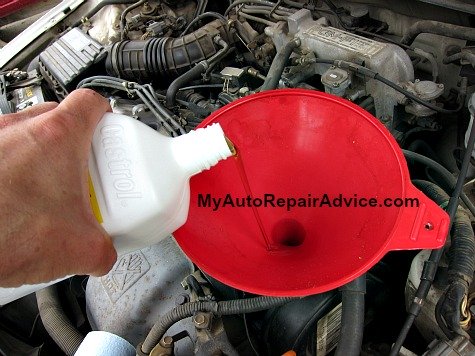
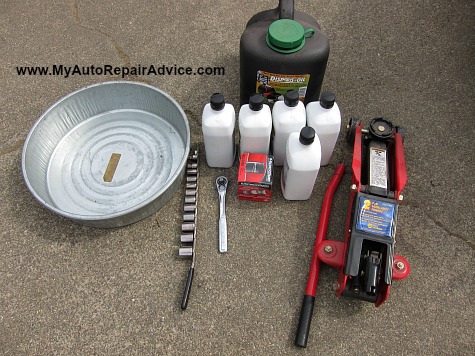
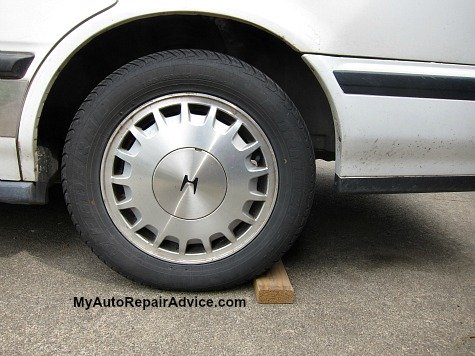
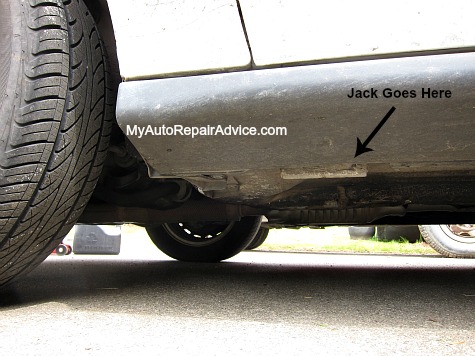
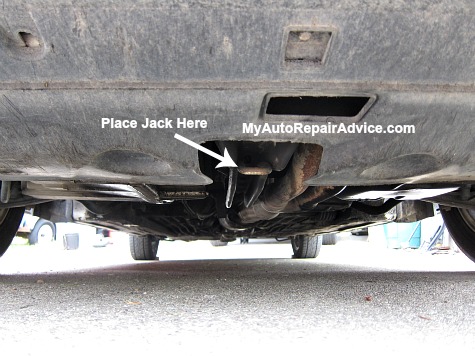
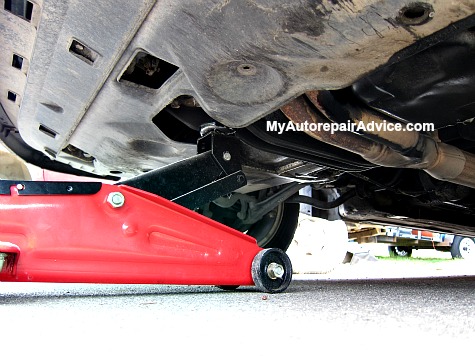
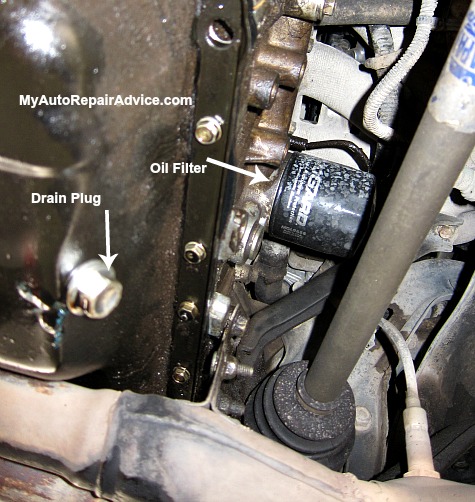
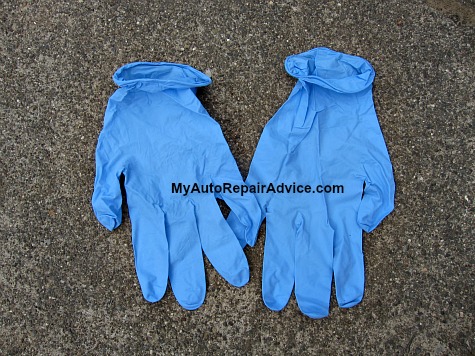
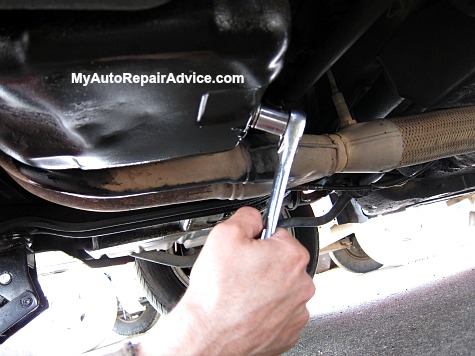
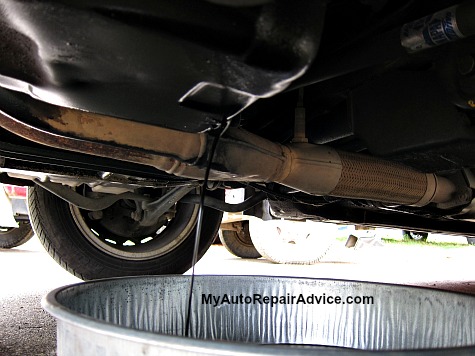
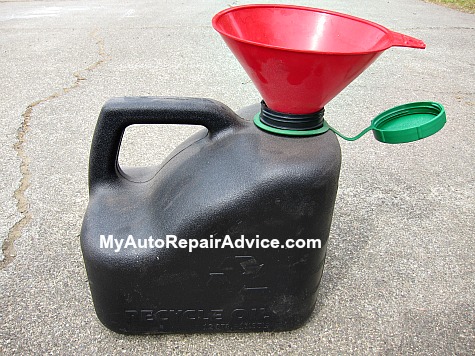
New! Comments
Have your say about what you just read! Leave me a comment in the box below.